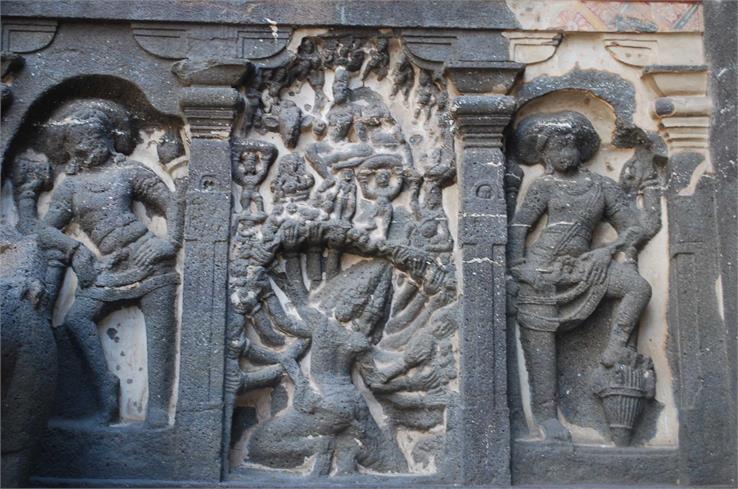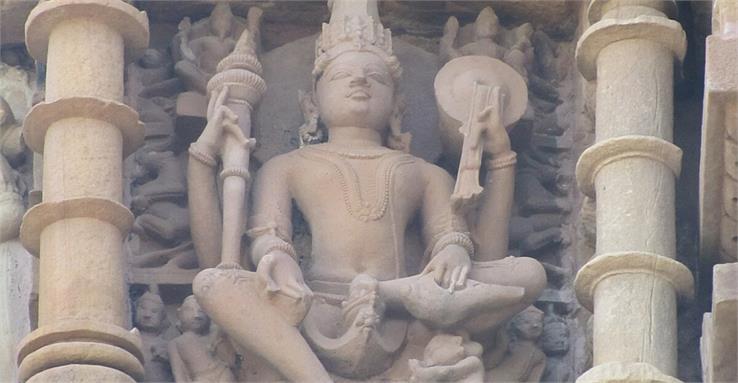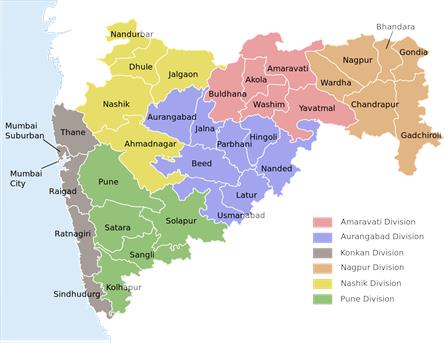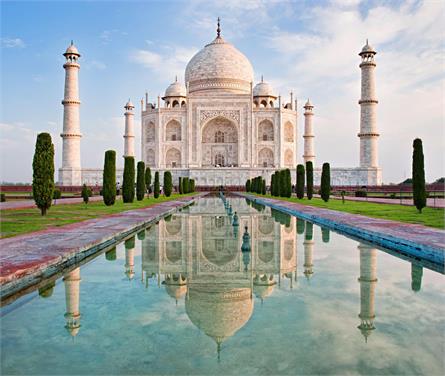The Ellora Caves: A Masterpiece of Indian Rock Art
The Caves of Shiva | A UNESCO World Heritage Site | A Visual Journey into Hindu Mythology
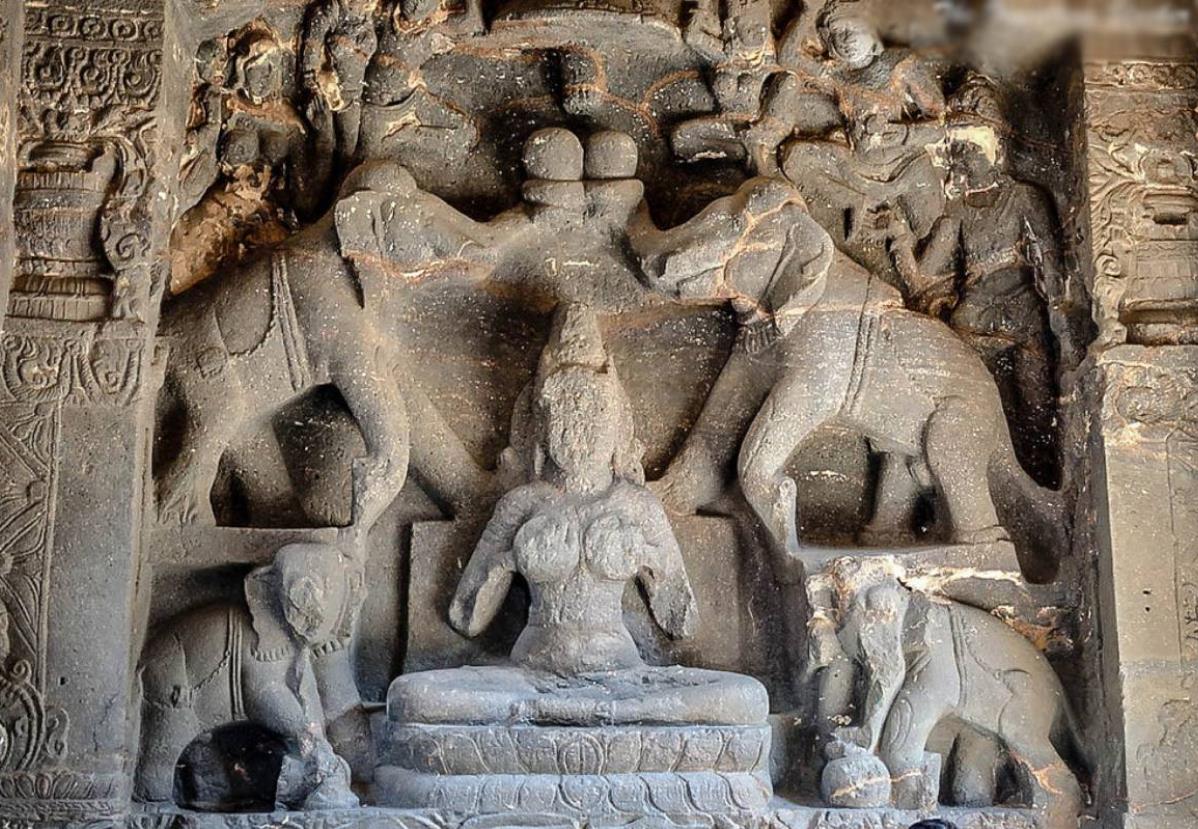
The Ellora Caves, also known as the Verul Caves, stand as a magnificent testament to India's rich cultural heritage. Located in the Aurangabad District of Maharashtra, these rock-cut cave complexes are a remarkable blend of art, architecture, and spirituality. With a history dating back to the 6th century CE, they are an enduring symbol of India's religious diversity and cultural harmony.
The caves comprise over 100 excavations, of which 34 are open to the public. They are categorized into three main groups: Hindu, Buddhist, and Jain caves, each dedicated to the respective religious beliefs prevalent during their construction. This article delves into the historical significance, architectural marvels, and religious harmony embodied by the Ellora Caves, offering a captivating journey through these ancient wonders.
Also Read: UNESCO World Heritage Sites in India
Historical Background of Ellora Caves | Ellora Caves UNESCO World Heritage | Indian rock-cut monuments | Hindu-Buddhist-Jain caves
The Ellora Caves are a remarkable fusion of history and spirituality. These caves were not only places of worship but also served as rest stops for pilgrims traversing the ancient South Asian trade routes. Their strategic location contributed to the region's commercial significance during ancient times.
The caves are believed to have been constructed during different dynastic periods. The early Hindu caves were likely built by the Kalachuri dynasty, while the Buddhist caves bear the influence of the Chalukya dynasty. Later phases of construction are attributed to the Rashtrakuta and Yadava dynasties. These diverse influences have led to debates regarding the chronological order of construction.
Also Read: Churches and Convents of Goa The UNESCO Heritage
Religious Harmony in Ellora Caves
One of the most remarkable aspects of the Ellora Caves is their portrayal of religious harmony. The coexistence of Hindu, Buddhist, and Jain caves in close proximity reflects the tolerance and acceptance of diverse belief systems in ancient India. This unique amalgamation of religious traditions makes Ellora a symbol of India's pluralistic ethos.
The Hindu caves, dedicated primarily to Lord Shiva, also feature other Hindu deities, showcasing the inclusive nature of ancient Hinduism. The Buddhist caves, though initially intended for Buddhist worship, exhibit influences from Hinduism, indicating a shared artistic and architectural heritage. Jain caves, dedicated to the Jain faith, further emphasize the site's inclusive character.
Also Read: Agra Fort, India's Majestic Jewel of Mughal Architecture
Architecture and Artistry | Ancient Indian cave art
The Ellora Caves are celebrated for their exceptional architectural and artistic achievements. Cave 16, known as the Kailasa temple, is a masterpiece carved entirely from a single rock. Modeled after Mount Kailash, it's dedicated to Lord Shiva and is among the most impressive rock-cut monuments globally. The temple's sheer scale and intricacy are awe-inspiring. The temple complex includes shrines to various deities, intricate carvings, and detailed reliefs depicting episodes from Hindu epics like the Mahabharata and the Ramayana.
Another significant cave is Cave 21, known as Rameshwar Lena, which features unique carvings narrating the story of the goddess Parvati and Lord Shiva. It also showcases the Sapta Matrika, a group of seven mother goddesses central to the Shakti tradition of Hinduism.
Also Read: Chhatrapati Shivaji Terminus A Glimpse into Mumbai's Architectural and Historical Marvel
Cave 15, the Dashavatara temple, presents a fusion of Buddhist and Hindu influences. The temple's design and sculptures reflect the interplay between these two traditions, creating a distinctive artistic narrative.
Also Read: The Ancient Ruins of Dholavira & Harappan Civilization
The Ellora Caves are not merely a historical relic but a living testament to India's enduring spiritual and artistic legacy. These caves showcase the inclusive nature of India's ancient civilization, where diverse religious beliefs peacefully coexisted. The architectural prowess displayed, especially in the Kailasa temple, leaves visitors in awe of the skill and dedication of the artisans who carved these monuments.
Also Read: Champaner-Pavagadh, A Must-Visit Site For History And Architecture Lovers
Ellora's rich tapestry of Hindu, Buddhist, and Jain caves paints a vivid picture of India's religious and cultural mosaic. It stands as a reminder of the importance of preserving such heritage sites to understand and appreciate the depth of India's history and its contributions to the world of art and spirituality. As a UNESCO World Heritage site, the Ellora Caves continue to attract visitors from across the globe, offering a glimpse into the remarkable past of a nation that cherishes its diversity and creativity.


